Breaking News
Poland reinforces tank arsenal with new Leopard 2PL M1 upgrades.
At the MSPO 2024 event, the Polish Armed Forces showcased the Leopard 2PL M1, a modernized version of the Leopard 2PL main battle tank (MBT), alongside two other tanks currently in service with the Polish Army: the K2GF (Gap Filler), a variant of the K2 Black Panther MBT specifically adapted by Hyundai Rotem for Poland, and the M1A1 Abrams with the Firepower Enhancement Package (FEP). These presentations are part of Poland's ongoing efforts to strengthen its military capabilities due to rising tensions with Russia and the conflict in Ukraine.
Follow Army Recognition on Google News at this link
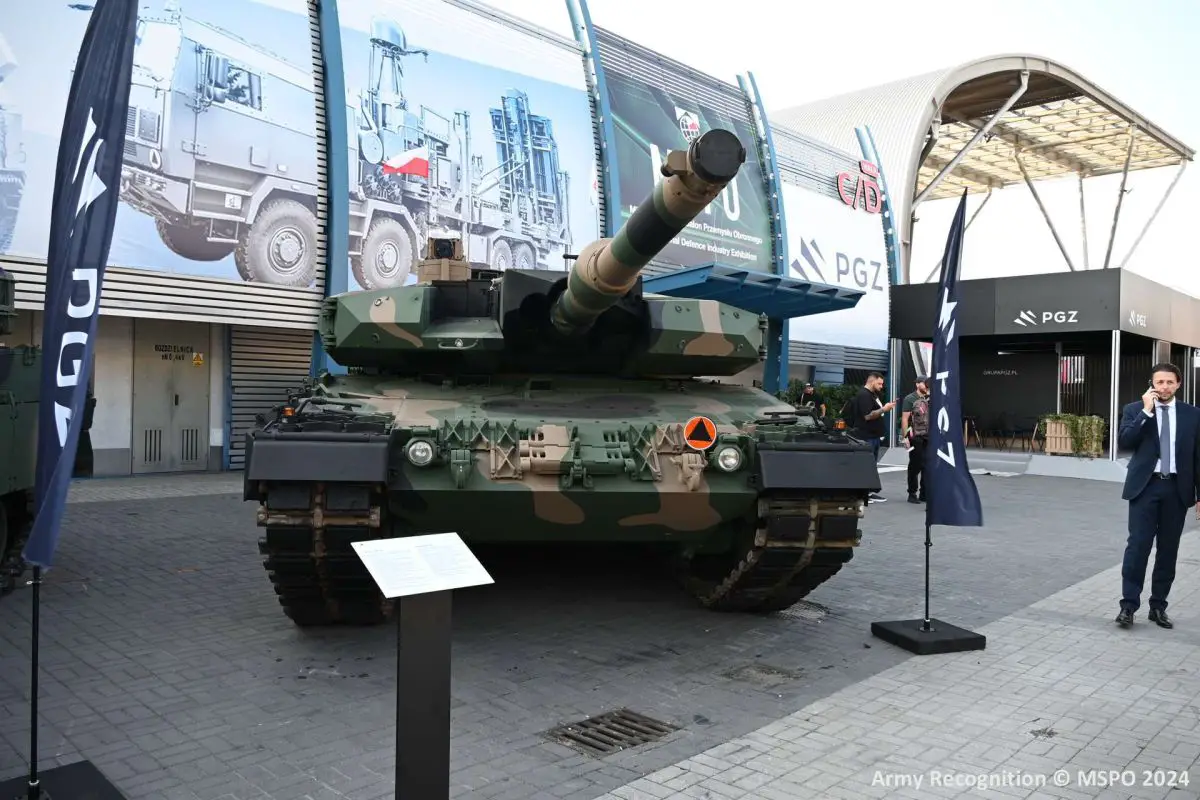
The implementation of the PIX function into the Leopard 2PL M1 allows for specific operational enhancements, such as selecting the last or first echo of the laser range, which supports targeting accuracy. (Picture source: Army Recognition)
The Leopard 2PL M1 upgrade from the Leopard 2A4 includes several enhancements. Notable changes involve the implementation of new commander's and gunner's sights equipped with third-generation cameras, which are aimed at improving target acquisition capabilities. Additional ballistic modules have been added to the turret to enhance the tank's protection. The hydraulic stabilization system has been replaced with a digital system, and modernized fire extinguishing and new fire suppression systems have been installed to increase safety measures within the tank.
Further modifications include an upgraded commander's control and monitoring system and changes to the diagnostic system to support better operational management. An Auxiliary Power Unit (APU) with a capacity of 17 kW has been integrated to provide electrical power for essential systems when the main engine is inactive. The turret now includes a new stowage compartment to accommodate crew equipment and customized towing and evacuation tools, considering the increased weight of the tank. The main gun has been modernized to adapt to newer types of ammunition, and a day-night rear camera has been installed to assist the driver.
The Leopard 2PL M1 variant includes additional improvements beyond these upgrades. The implementation of the PIX function allows for specific operational enhancements, such as selecting the last or first echo of the laser range, which supports targeting accuracy. The variant introduces an automatic fire extinguishing system in the APU compartment, alongside a cold start system that allows the engine to start without restarting the electronic devices. There is also a micro charging battery system designed to maintain the battery charge during storage.
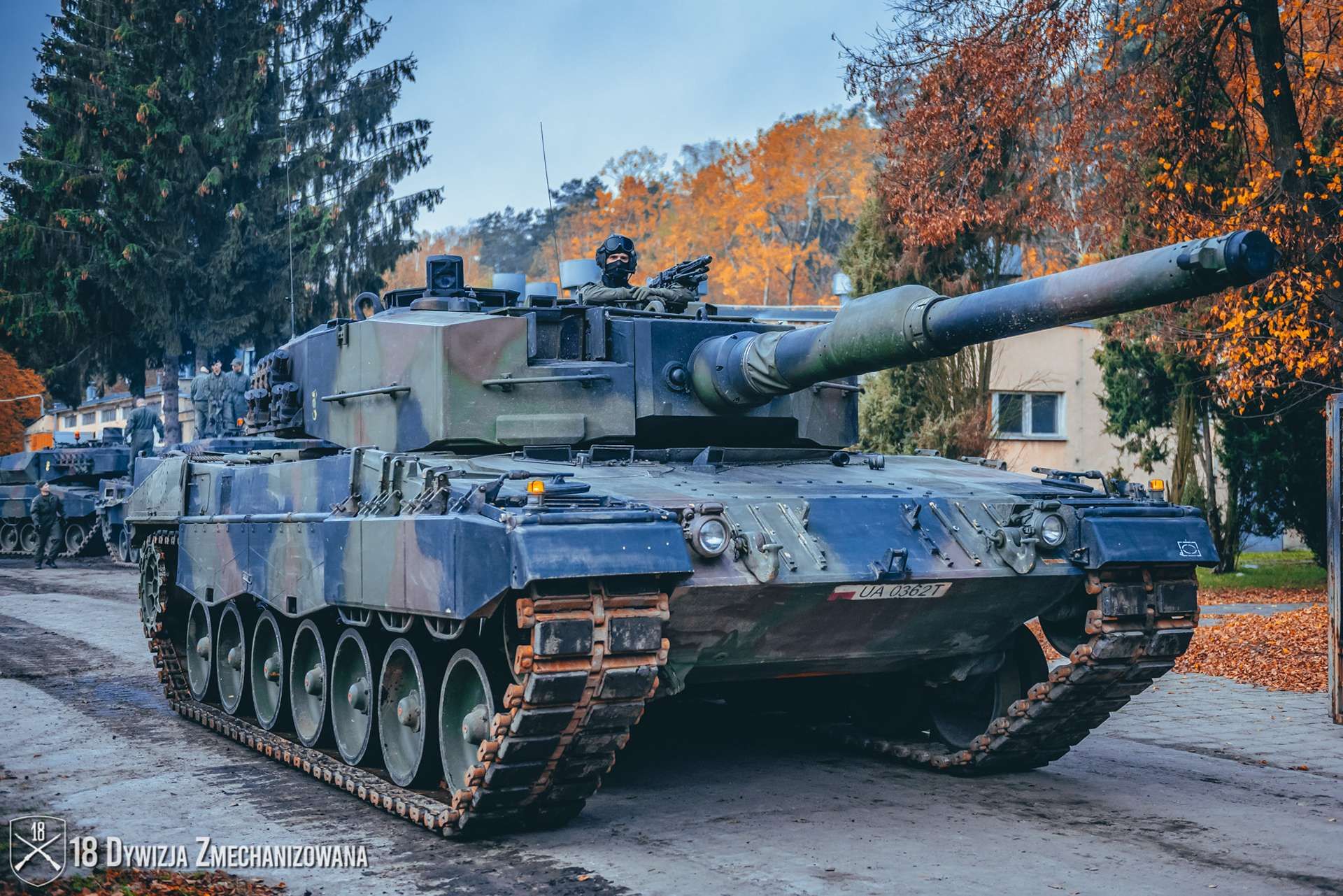
The Leopard 2PL modernization program was initiated after the Polish Land Forces acquired the Leopard 2A4 tanks from the Bundeswehr in 2002. (Picture source: 18 Dywizja Zmechanizowana)
Other modifications involve the installation of an active cooling system for the electronics compartment and the preparation of the electrical installation to support the Identification Friend or Foe (IFF) system, which assists in distinguishing between allied and enemy forces in combat situations. These changes in the Leopard 2PL M1 are intended to provide the Polish Army with a more updated version of the Leopard 2PL, aimed at improving its operational capabilities in various combat scenarios.
The Leopard 2PL modernization program was initiated after the Polish Land Forces acquired the Leopard 2A4 tanks from the Bundeswehr in 2002. The need for modernization was identified soon after, but concrete planning began in mid-2012. The program, named Leopard 2PL, defined two variants of modernization. The basic variant included an electric turret drive and gun stabilization to replace the hydraulic systems, the installation of an auxiliary power unit, upgrades to the optoelectronic system, new thermal imaging cameras, modernization of the driver's seat, and an enhanced package for explosion, fire, and mine protection. The extended variant added a Battle Management System (BMS), a remote-controlled weapon station on the turret, new types of ammunition, air conditioning for the driver and combat compartments, and a modernization of the electronics cooling system.
In December 2012, the Leopard 2PL program was incorporated into the "Technical Modernization Plan of the Polish Armed Forces for 2013-2022." A technical dialogue was initiated in March 2013, leading to a tender in October of the same year. Three consortia participated: one comprising Wojskowe Zakłady Motoryzacyjne, Wojskowe Zakłady Łączności Nr. 2, and Rheinmetall Landsysteme GmbH; another involving PCO and ASELSAN Elektronik; and the third consisting of Bumar-Łabędy, OBRUM, and Polski Holding Obronny (PHO). The third consortium submitted the final offer, after which negotiations began with the Inspectorate of Armaments.
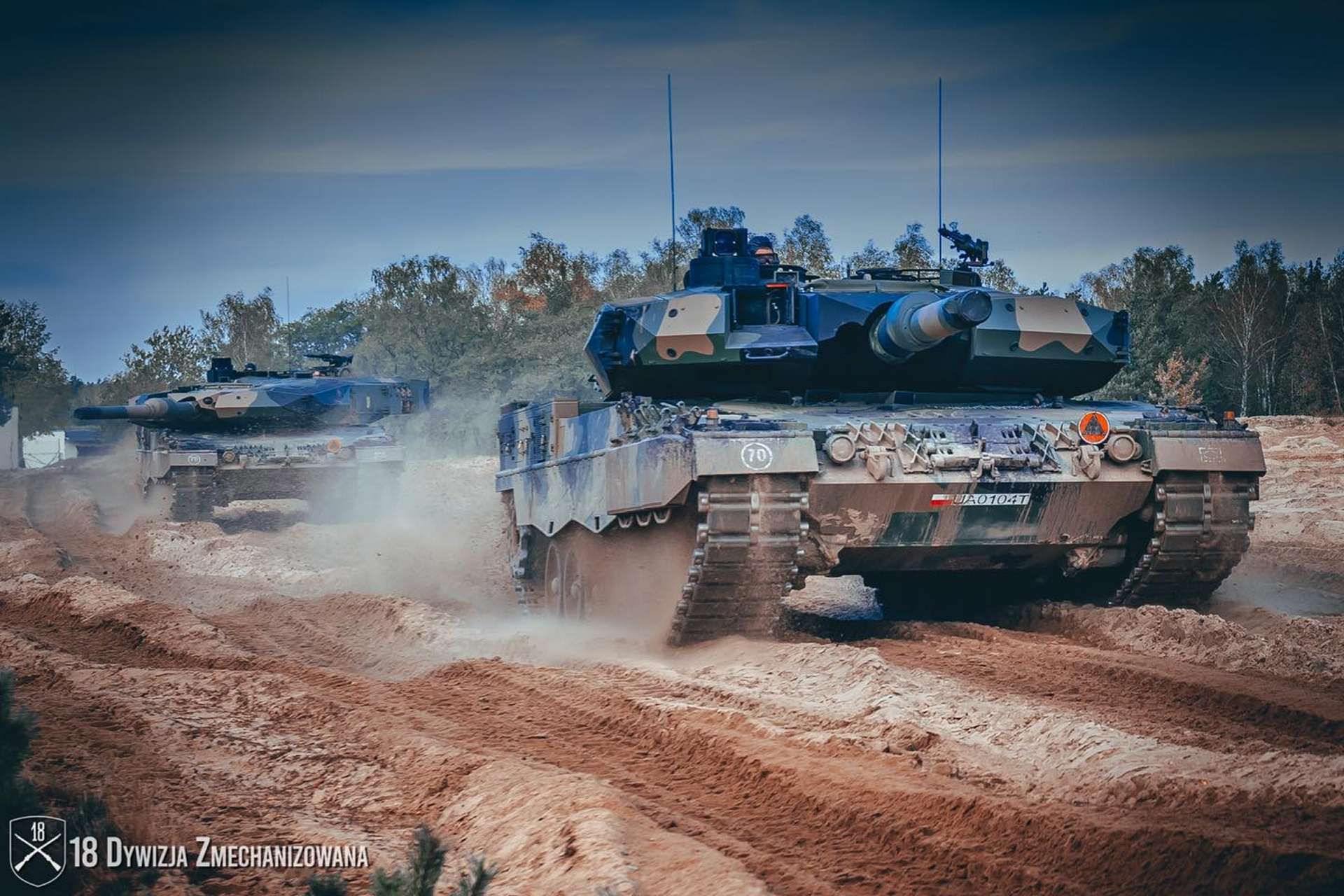
In 2018, technology transfer and staff training were conducted on a trial batch of Leopard 2PL tanks. (Picture source: 18 Dywizja Zmechanizowana)
By December 2014, the consortium submitted a final proposal in cooperation with Krauss-Maffei Wegmann. However, the selection procedure was terminated in 2015 due to formal deficiencies and insufficient participation of the Polish industry. Subsequently, the modernization was contracted to the Polish Armaments Group (PGZ). Negotiations started following the submission of a final offer in November 2015.
On December 28, 2015, a contract was signed between the Inspectorate of Armaments and a consortium of PGZ and Bumar-Łabędy for the modernization of 128 Leopard 2 tanks, with an option for an additional 14 units. The German partner, Rheinmetall Landsysteme, had previously co-produced Leopard 2 tanks. The contract was initially valued at 2.415 billion PLN (approximately €555.45 million) and later increased to 2.721 billion PLN (€625.83 million) following an annex in June 2018 that covered the additional 14 tanks. The original timeline planned for all 128 tanks to be modernized by 2020, with the additional 14 tanks completed by 2021.
The modernization work was divided into five stages. The first stage in 2016 involved preparing the necessary infrastructure and resources. Between November 2016 and the end of 2017, the tanks were dismantled and prepared for modernization. In 2018, technology transfer and staff training were conducted on a trial batch of tanks. Production began in mid-2018, with delivery of pre-series machines scheduled from June 2018 to March 2019. The final stage, from January 2019 to November 2020, involved serial modernization and deliveries. However, delays in prototype testing and issues with the tank's chassis extended the timeline, raising the total cost to 3.29 billion PLN (€756.7 million).

The Leopard 2PL is powered by an MTU-MB 873 engine, producing 1,100 kW (1,500 hp), allowing for a maximum speed of 68 kilometers per hour. (Picture source: 18 Dywizja Zmechanizowana)
A detailed agreement was signed with Rheinmetall on February 18, 2016, outlining the terms of cooperation between ZM Bumar-Łabędy and the German partner. Rheinmetall was responsible for developing the modernization project, preparing technical documentation, producing a prototype and trial batch, providing technical support for serial production, and transferring necessary technology.
By August 2018, the prototype was delivered to the Military Armored and Automotive Institute in Sulejówek for further testing, and the first pre-series tanks were handed over to ZM Bumar-Łabędy to enable local production. Despite delays, including problems with the chassis, the prototype was completed on May 8, 2020, and the first tanks were delivered to the Polish Army on May 28, 2020. The contract was extended to July 2023, and the final cost increased due to additional restoration requirements and the different wear levels of the tanks.
The Leopard 2PL is designed as a third-generation main battle tank intended to control terrain and support mechanized and motorized units with its onboard weapons in various weather conditions, both day and night. Two versions have been developed: the Leopard 2PL and the Leopard 2PL M1. The latter, delivered in January 2021, features an active cooling system for the electronics compartment, improved turret electronics protection, modified laser rangefinder operating modes, and an automatic rotation function for the optoelectronic head.
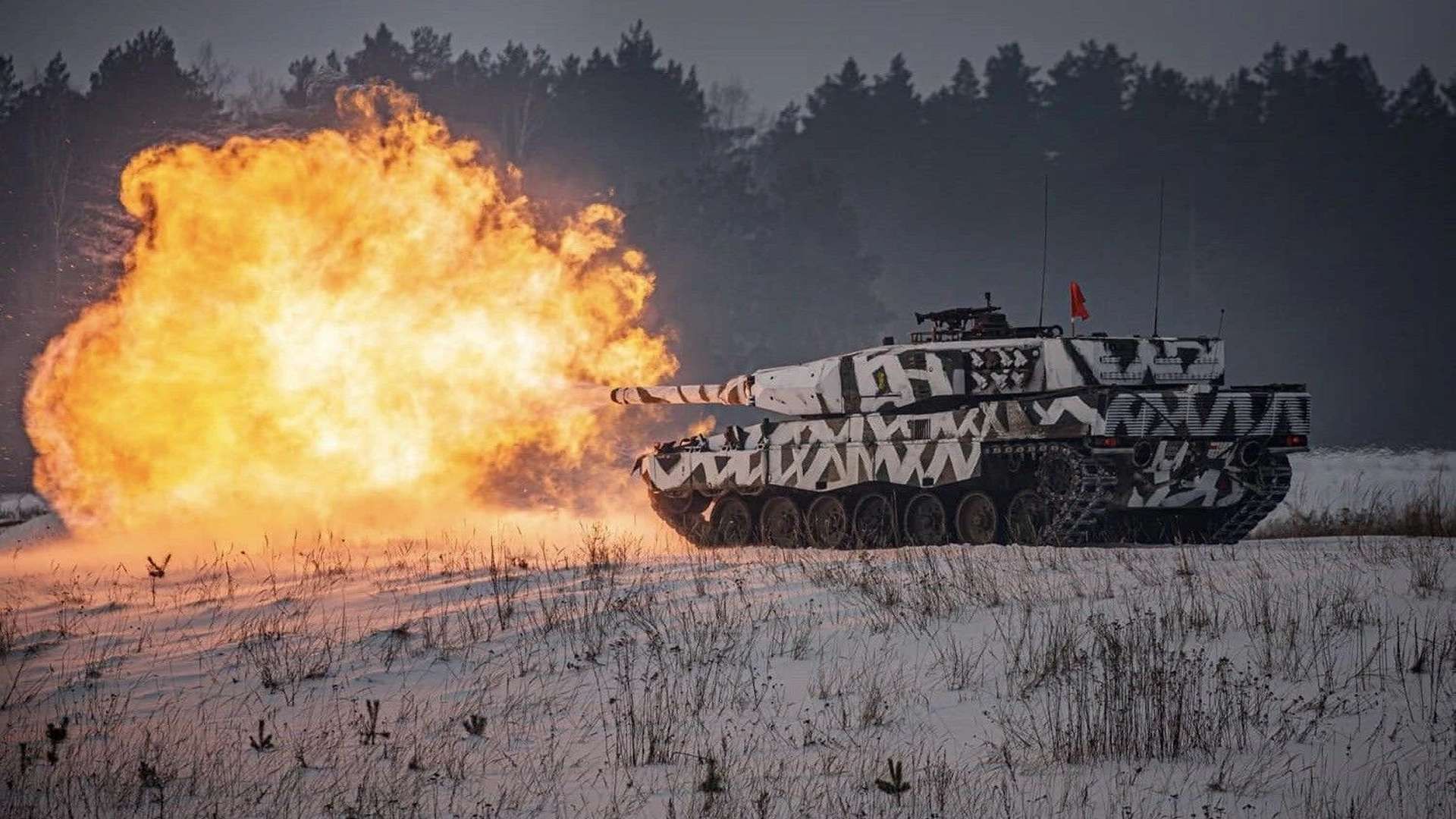
The Leopard 2PL's primary armament remains the Rheinmetall Rh-120 L/44 smoothbore gun, modified for new ammunition types. (Picture source: 1 Warszawska Brygada Pancerna)
The Leopard 2PL's armor has been enhanced with additional modules around the turret, improving ballistic resistance beyond the Leopard 2A5. The hull and chassis were not additionally armored due to weight and cost considerations. The tank's primary armament remains the Rheinmetall Rh-120 L/44 smoothbore gun, modified for new ammunition types. The gun stabilizer and turret drive systems were converted from hydraulic to electric. The optics system was upgraded with Polish third-generation thermal imaging cameras, and a digital communication bus was introduced.
The Leopard 2PL weighs 59,203 kg, measures 9.67 m in length, 3.75 m in width, and 3.05 m in height, and has a crew of four. It is equipped with composite armor and armed with a Rheinmetall Rh-120 L/44 120mm smoothbore cannon and two MG3 machine guns. The Leopard 2PL is powered by an MTU-MB 873 engine, producing 1,100 kW (1,500 hp), allowing for a maximum speed of 68 kilometers per hour and an operational range of 500 kilometers on the road and 300 kilometers off-road.
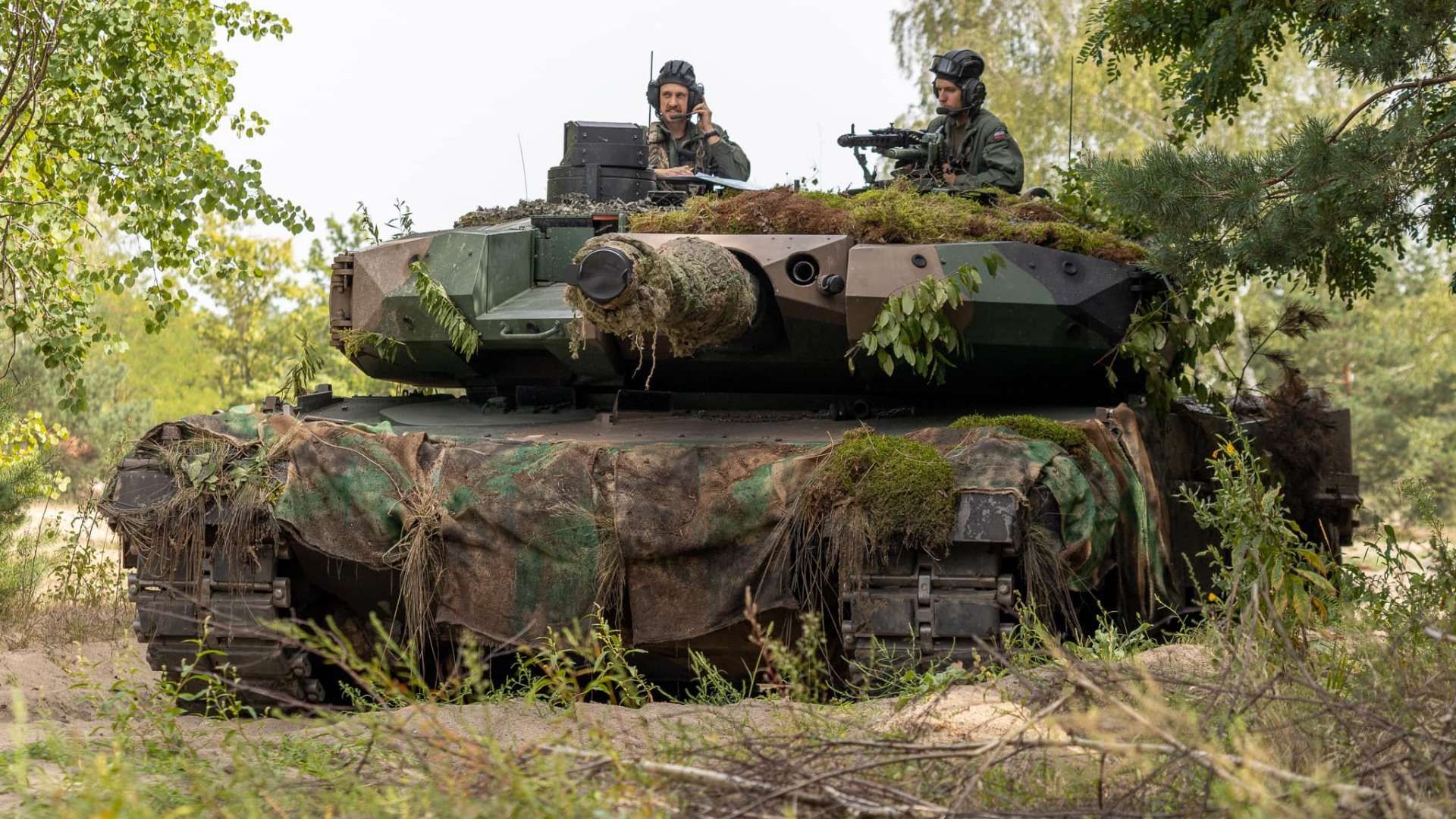
The Leopard 2PL's armor has been enhanced with additional modules around the turret, improving ballistic resistance beyond the Leopard 2A5. (Picture source: 1 Warszawska Brygada Pancerna)


























